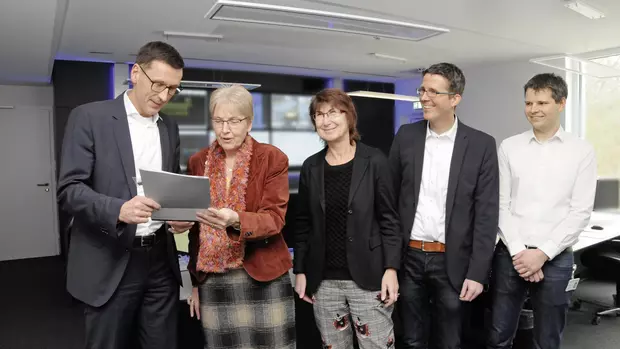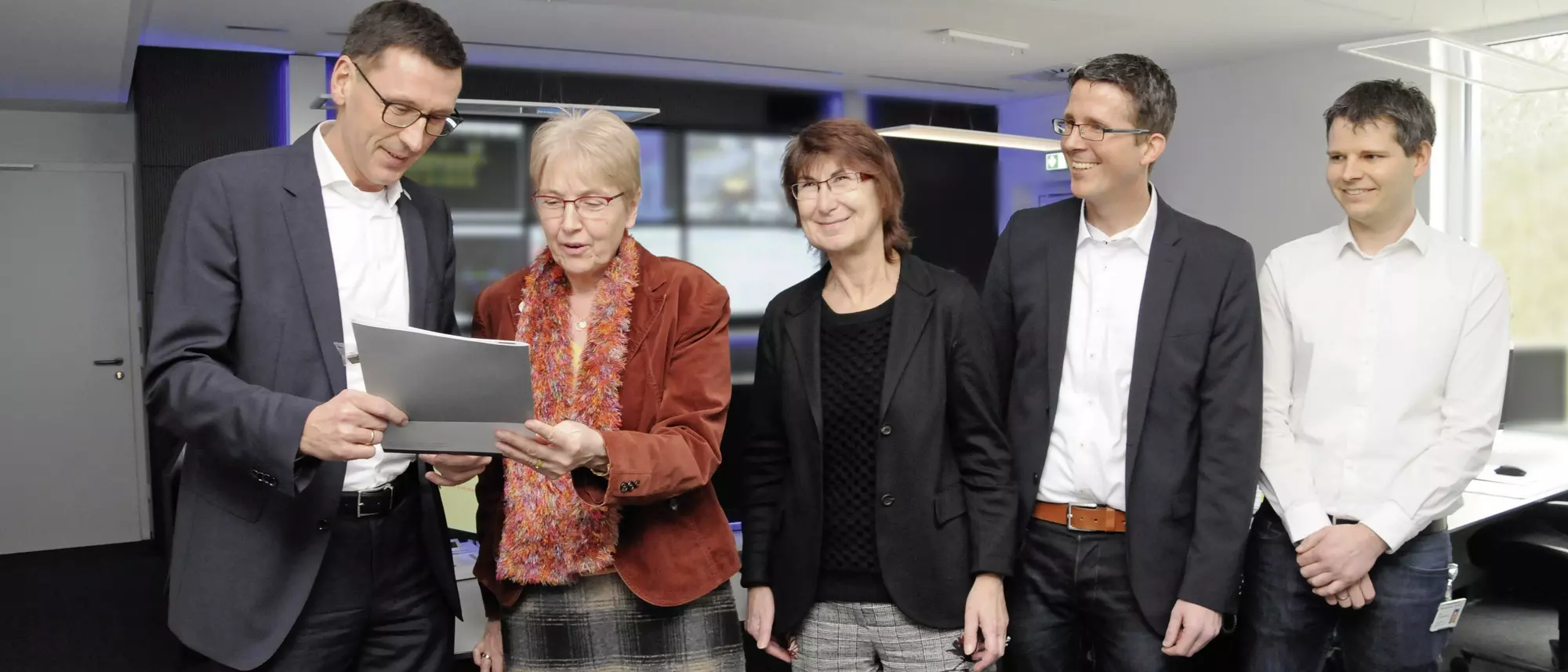
On Friday, Stadtwerke Gießen (SWG) officially put its new grid control centre into operation. From the four ultra-modern workstations in the Leihgesterner Weg cogeneration plant, the control centre operators can now keep an eye on all of SWG's grids 24 hours a day. A plus in terms of supply security.And the option to open up another business segment.
Electricity, natural gas, water and district heating - Stadtwerke Gießen (SWG) supplies around 100,000 customers. To guarantee this reliably, two things are needed: secure, well-developed networks and the ability to monitor and control these lines and the systems integrated into them. It was precisely for this purpose that SWG set up a new central network control centre last year, which officially went into operation yesterday after around three months of successful test operation.
Behind the control centre, which is equipped with state-of-the-art technology, lies a completely new organisation. Previously, SWG had a control centre for the district heating network and a second one for the electricity, natural gas and water networks. "In the past, this was certainly justified. But the new energy world requires more flexibility from all players on the market," says Jens Schmidt, Commercial Director of SWG, explaining the decision.
The small difference
In fact, monitoring a district heating network is different from monitoring an electricity, gas or water network. In the district heating sector, the main task is to keep an eye on the many different generation plants and coordinate them with each other. In the other three sectors, the main task is to maintain reliable transport. "Nevertheless, these various tasks can be handled very well in a central grid control centre. In fact, even better," says Kai Timmermann, head of the grid control centre. This is because the new organisation makes it possible to staff the grid control centre with the same personnel around the clock. Previously, the colleagues responsible for the electricity, natural gas and water grids took it in turns to be on standby at night. "This has worked very well all these years," adds Matthias Fink, Head of the Heat Supply Department at SWG. "But we assume that we will have to intervene much more often in future, especially for electricity."
These considerations have been triggered by the energy transition and climate change. Because more and more electricity from renewable energy sources is being fed into the German electricity grid, the specialists in the control centres have to react faster and faster to compensate for the associated fluctuations. In addition, the apparent increase in extreme weather conditions is exacerbating the situation in a grid control centre. "The risk of a real crisis - for example due to a storm that destroys a high-voltage line - has increased significantly in recent years," adds Astrid Eibelshäuser, Chairwoman of the Supervisory Board of Stadtwerke Gießen.
Working together more effectively
Stadtwerke Gießen is countering both risks with its new grid control centre. And they are also defusing another problem in the process. If there is a power failure, the district heating network is inevitably affected. Because without electricity, neither burners nor pumps work. "The colleagues are now sitting in the same room - basically right next to each other. This makes it much easier to coordinate and work together on the same complex problem," says Kai Timmermann happily.
One of the main tasks of the control room attendants in a network control centre is to identify and rectify faults that can occur time and again despite all the care taken during maintenance. Or at least to arrange for a prompt repair. This happens regularly and often goes unnoticed by customers. "With the continuous 24/7 staffing of the control centre, we have now created the ideal conditions," says Matthias Fink confidently.
Strict standard met
The new grid control centre is subject to special safety regulations. And rightly so - after all, like all IT, it is a central component of the increasingly digitalised, critical supply infrastructure. This is precisely why it is one of the areas of SWG for which Stadtwerke Gießen has set up its own information security management system (ISMS) in recent months. This ISMS was finally certified in accordance with ISO 27001 in December 2017. "The strict requirements of this standard were the basis for all our planning right from the start," recalls Jörg Scheibelberger, IT Security Officer at SWG. Before the new network control centre went into operation, independent auditors inspected the technical components in use, the organisation and the required documentation before issuing the corresponding certification. "Every detail counts in this type of certification, from access regulations and the allocation of responsibilities to clearly defined work processes and a transparent risk assessment," adds Kai Timmermann. Fulfilment of the requirements remains an ongoing task: the auditors come every year for smaller audits and a full recertification is due every three years.
With the new network control centre and the organisation behind it, SWG has set the course for the future. And not only with regard to the grids in the SWG Group. In fact, those responsible would like to make the know-how of their experts from the Leihgesterner Weg available to other grid operators. "We are planning to offer grid monitoring as a service in future," explains Jens Schmidt. There shouldn't be a lack of demand. After all, all grid operators face the same challenges. But by no means all of them have the financial resources that SWG does, and very few of them start at a comparable level. Smaller municipalities in particular, which operate their own grids, are likely to be interested in such an option. So there is a good chance that the new grid control centre will also be used to control grids in completely different regions of Germany in the future.

